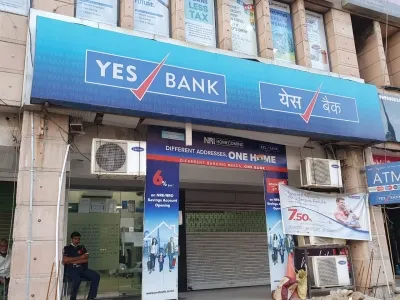How Much Did ICICI Bank’s Q2 PAT Increase YoY?

Synopsis
Key Takeaways
- Profit after tax rose by 5.2% YoY to Rs 12,359 crore.
- Net interest income increased by 7.4% to Rs 21,529 crore.
- Core operating profit grew by 6.5% YoY to Rs 17,078 crore.
- Net NPA ratio at 0.39% by the quarter-end.
- Capital adequacy ratio stands at 17%.
New Delhi, Oct 18 (NationPress) ICICI Bank, the second-largest private bank in India, has reported a remarkable 5.2% year-on-year growth in its profit after tax (PAT), amounting to Rs 12,359 crore for the second quarter of FY26.
According to the bank's exchange filing, net interest income (NII) surged by 7.4% to Rs 21,529 crore, accompanied by a net interest margin of 4.30%. The profit before tax, excluding treasury, saw a year-on-year increase of 9.1%, reaching Rs 16,164 crore in this quarter.
The filing further detailed that average deposits grew by 9.1% year-on-year, totaling Rs 15,57,449 crore in Q2-2026. The average current account and savings account (CASA) ratio stood at 39.2% for Q2 2026.
Moreover, average savings account deposits experienced an increase of 8.5% year-on-year and 3.2% sequentially in Q2 2026.
ICICI Bank reported that its core operating profit grew by 6.5% YoY to Rs 17,078 crore in Q2FY26, compared to Rs 16,043 crore during the same period last year. The net NPA ratio was noted at 0.39% by the end of this quarter, as stated in the release.
The bank's provisions (excluding tax) saw a decline to Rs 914 crore in Q2FY26 from Rs 1,233 crore in Q2FY25 and Rs 1,815 crore in Q1FY26. The retail loan portfolio grew by 6.6% year-on-year and 2.6% sequentially, making up 52.1% of the total loan portfolio by the end of September.
Additionally, the retail portfolio accounted for 42.9% of the total portfolio, including non-fund outstanding. After adding 263 branches during the first half of 2026, the bank now operates 7,246 branches along with 10,610 ATMs and cash recycling machines. Including profits for the six months in H1-2026, ICICI Bank’s total capital adequacy ratio stands at 17%, while the CET-1 ratio is 16.35%, well above the minimum regulatory requirements of 11.70% and 8.20%, respectively.









